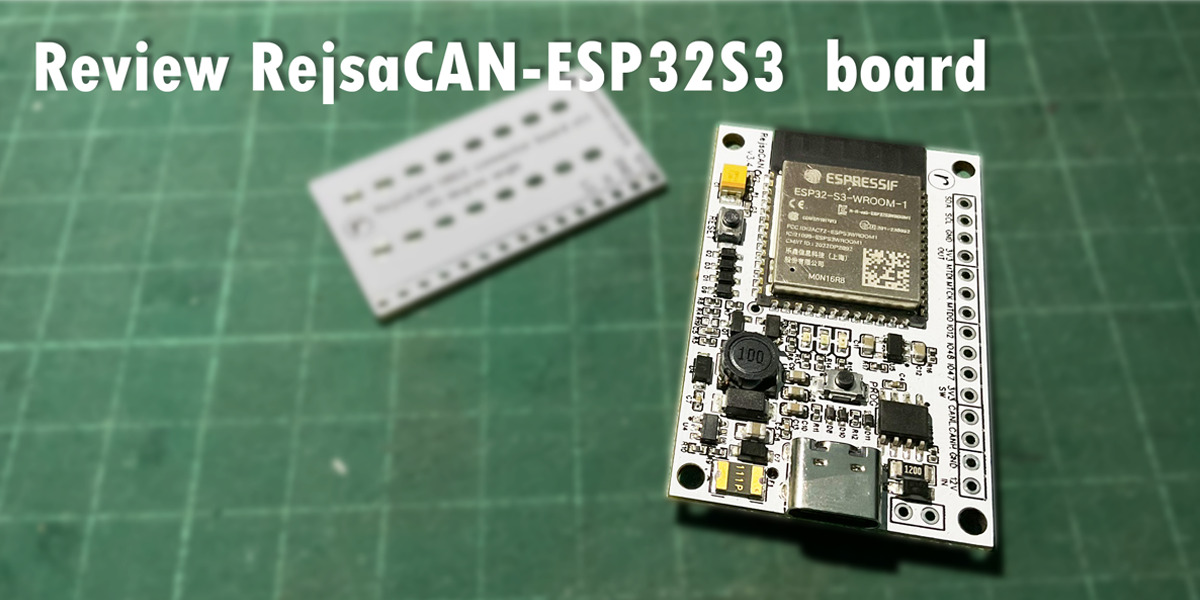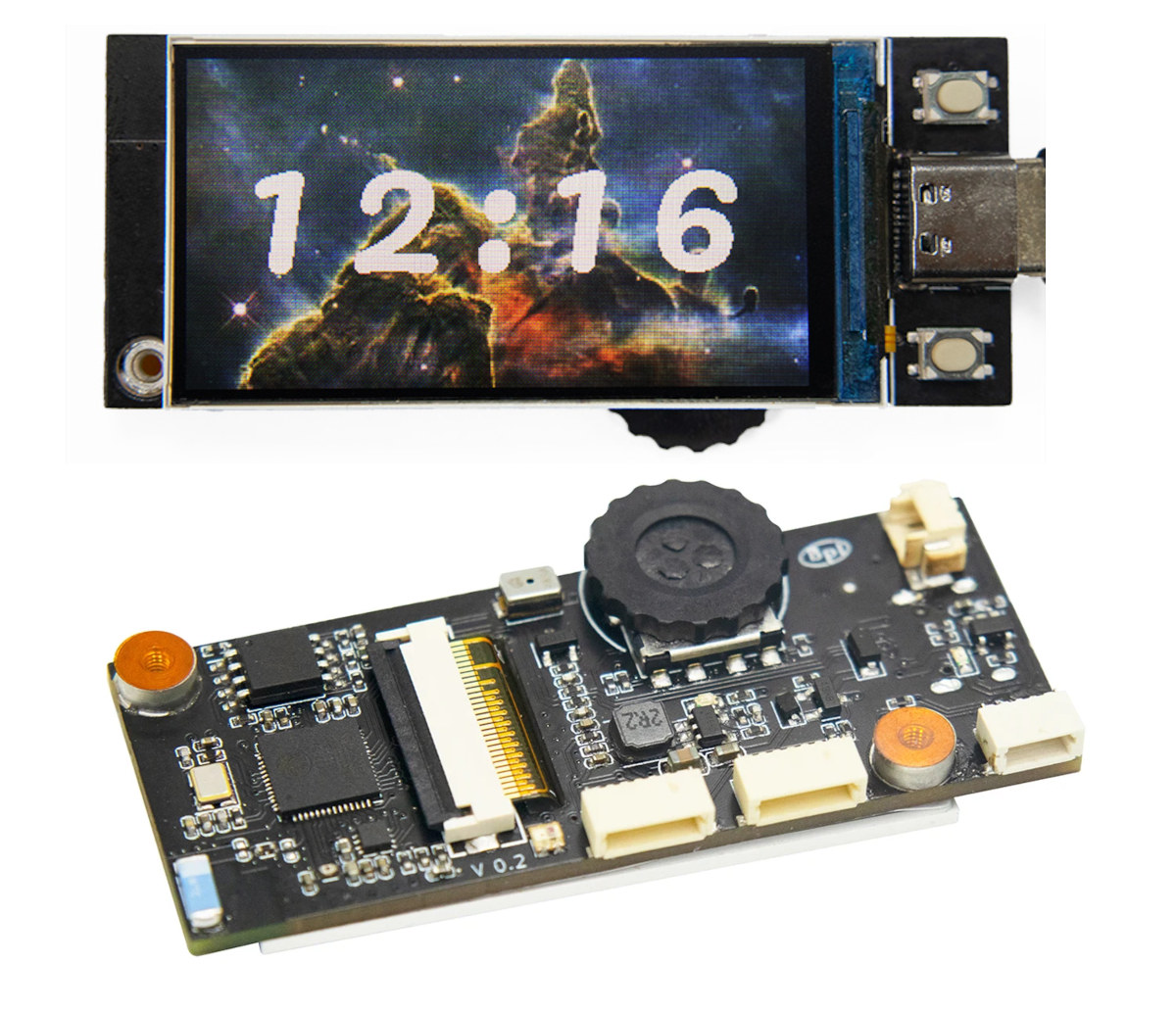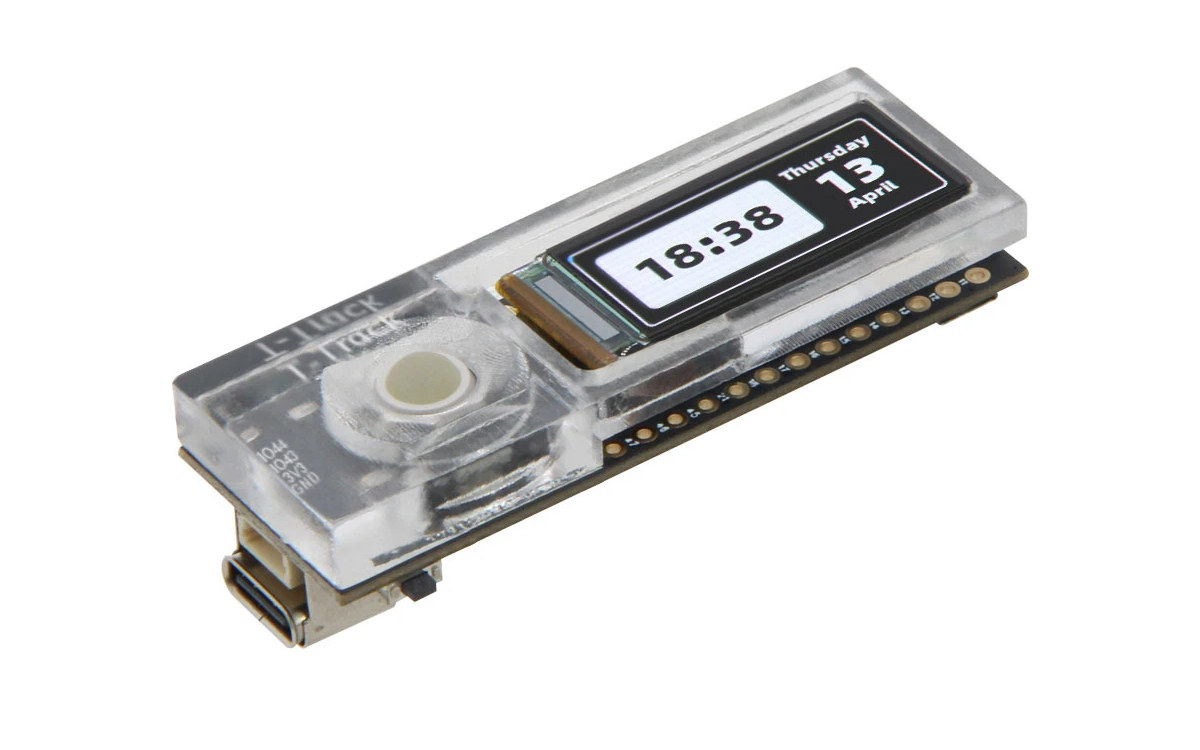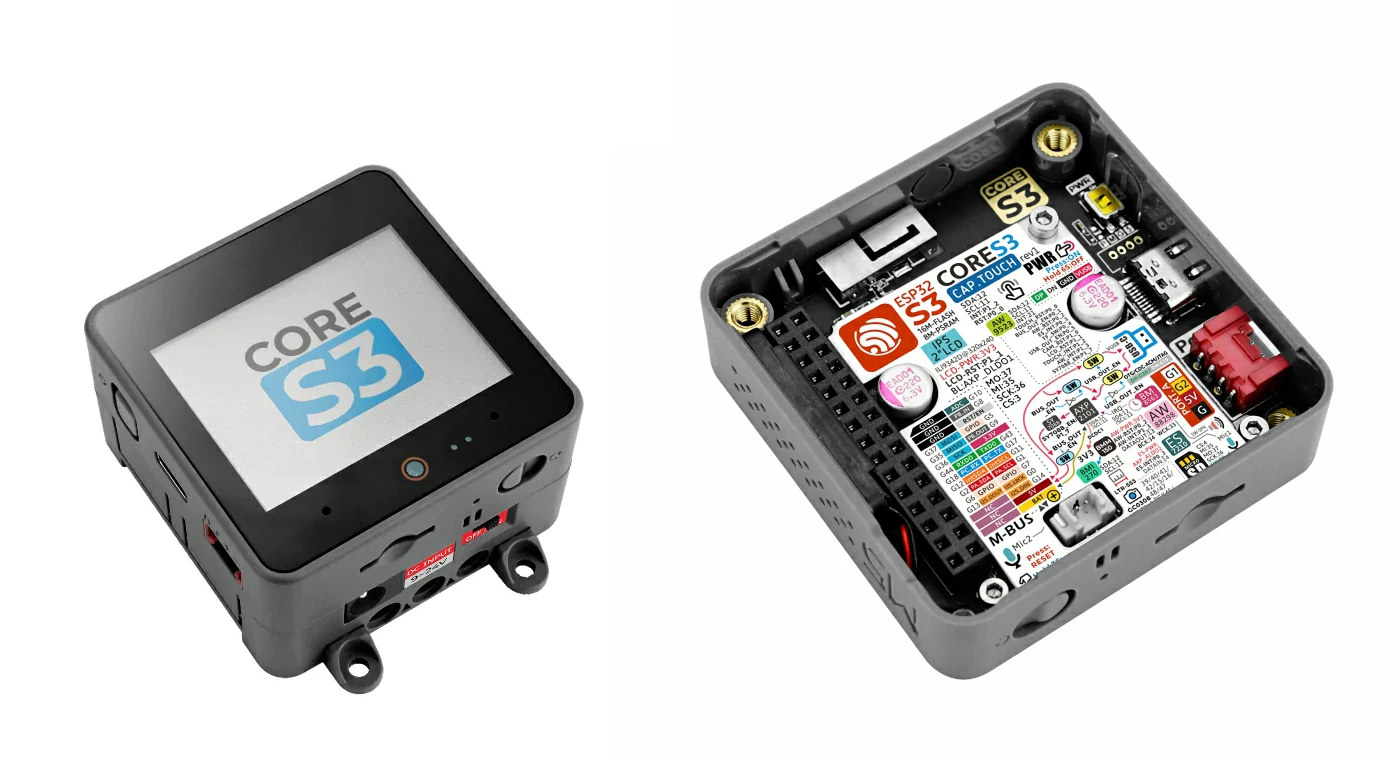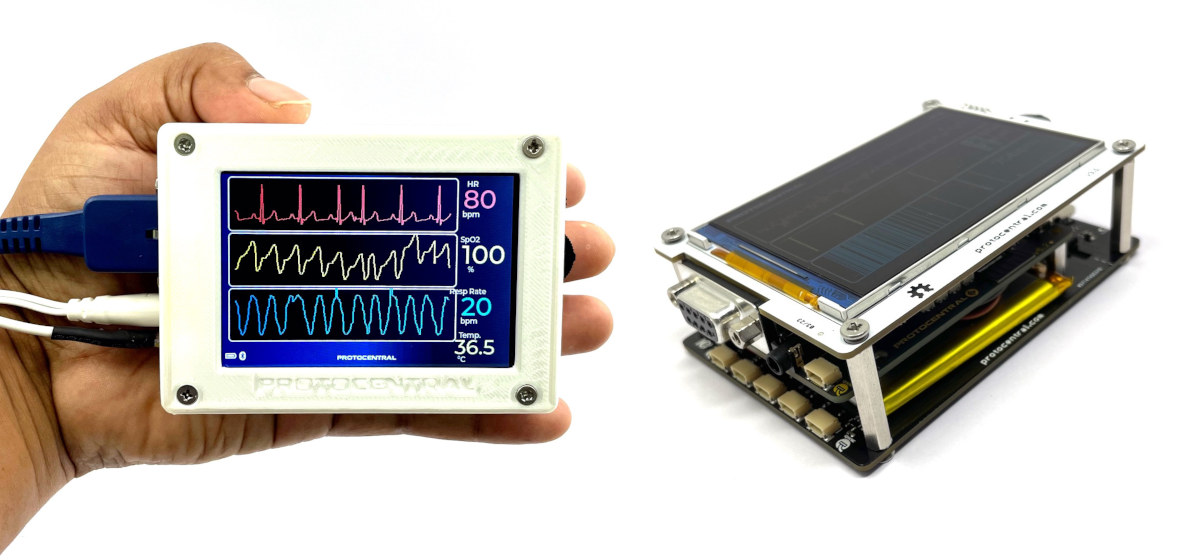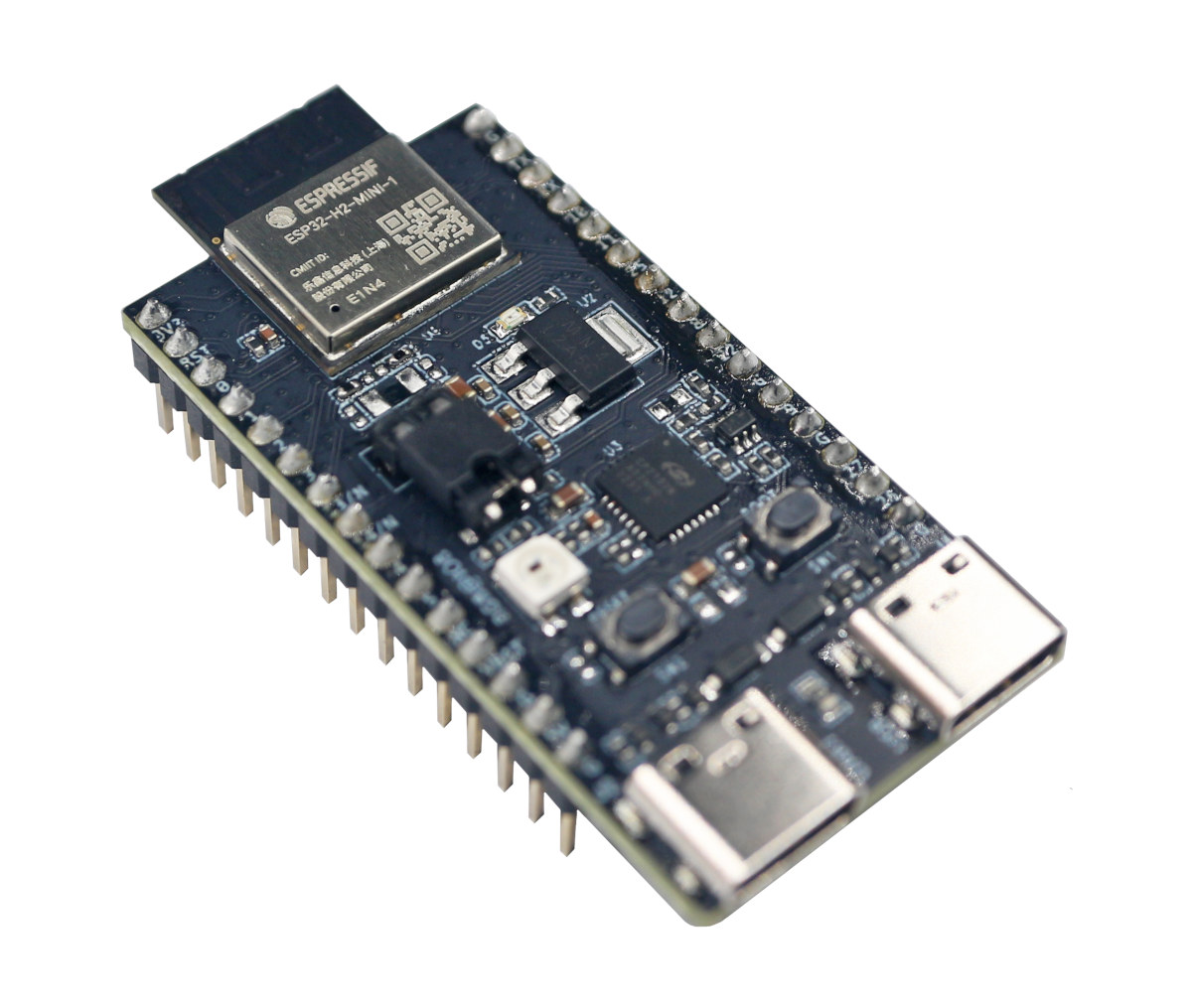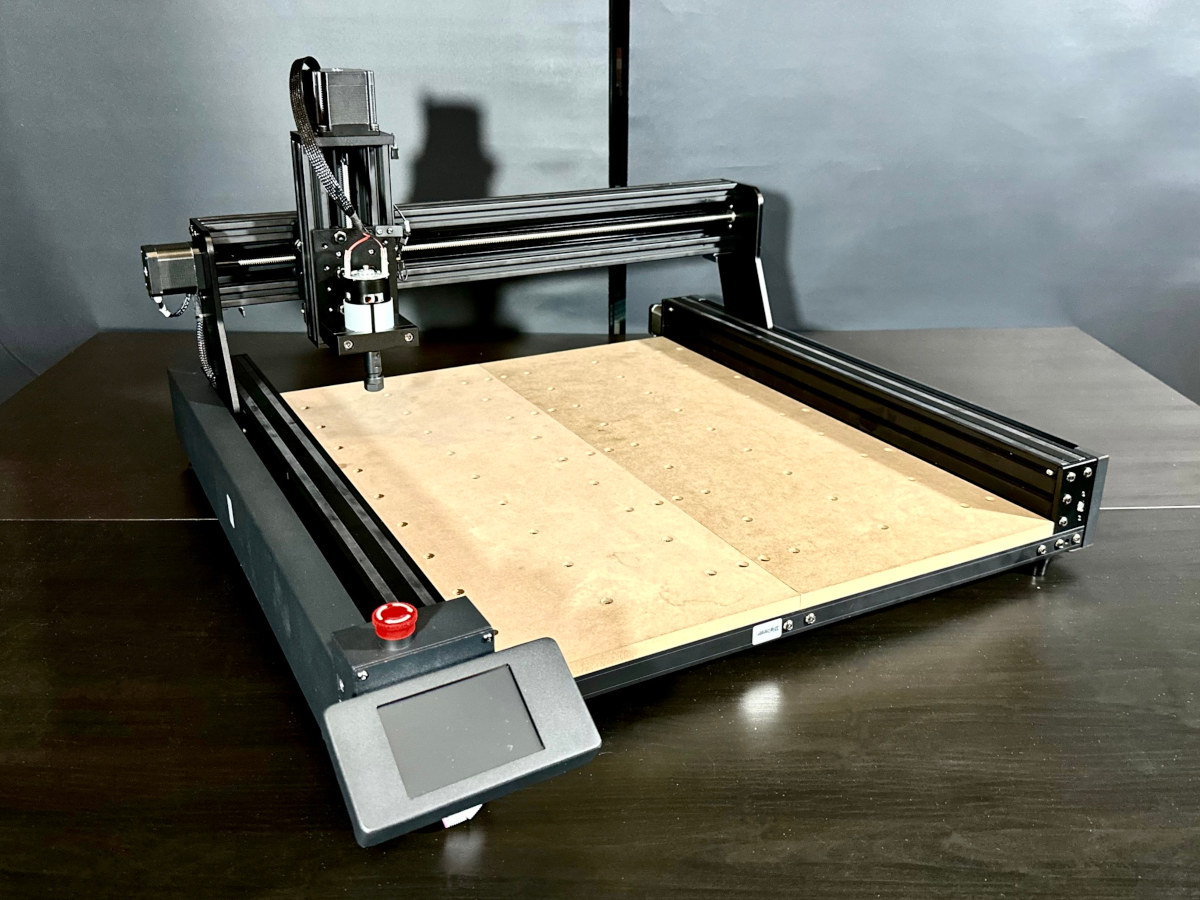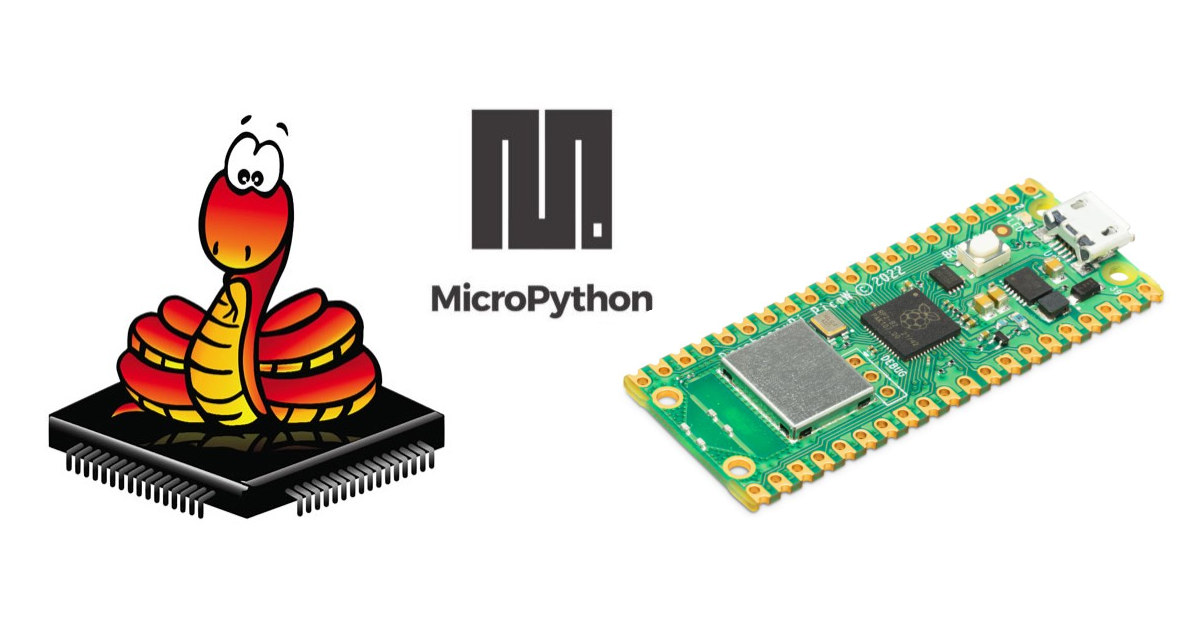The RejsaCAN-ESP32-S3 is an ESP32-S3 board suitable for developers who want to build a car-related project. It can control or read the data from the OBD-II connector in your car using 2.4 GHz Wi-Fi or/and Bluetooth 5 (LE), or for IoT projects, connecting a sensor to the board and sending data to an app, the cloud, or log the data to a microSD Card. The board is designed to be small enough to be installed in a car. The board is an evolution of the previous ESP32-based RejsaCAN-ESP32 with the developer – Magnus Thomé – switching to the ESP32-S3 chip as previously announced. The main specifications are similar, but the ESP32-S3 is a newer LX7 processor with Bluetooth LE 5.0 support, and the ESP32 board had to use a USB-to-serial chip to communicate or upload the program through a PC, but the new board uses the USB interface on […]
Banana Pi BPI-Centi-S3 – An ESP32-S3 board with an 1.9-inch TFT display and a rotary encoder
Banana Pi BPI-Centi-S3 is an ESP32-S3 WiFi & BLE IoT board with a 1.9-inch color TFT display, a rotary encoder, and a few I/Os, which offers an alternative to the T-Track ESP32-S3 board with AMOLED and trackball we covered a few days ago. The Banana Pi board also comes with a 2MB on-chip PSRAM, an 8MB SPI flash, a USB Type-C port for power and debugging, two buttons, a buzzer, and an RGB LED. Besides powering the board with its USB-C port, you can also connect a LiPo battery with charging support. Banana Pi BPI-Centi-S3 specifications: SoC – Espressif Systems ESP32-S3 dual-core Tensilica LX7 @ up to 240 MHz with vector instructions for AI acceleration, 512KB RAM, 2MB PSRAM, wireless connectivity Storage – 8MB SPI flash Connectivity via ESP32-S3 2.4 GHz 802.11 b/g/n Wi-Fi 4 with 40 MHz bandwidth support up to 150 Mbps Bluetooth Low Energy (BLE) 5.0 connectivity […]
LILYGO T-Track ESP32-S3 board combines 1.1-inch AMOLED display with trackball
After the T-Display-S3 AMOLED board, LILYGO has launched another ESP32-S3 board with an AMOLED display named the T-Track that features a smaller 1.1-inch AMOLED display and a trackball that allows the user to navigate any menu or user interface shown on the display. The rest of the board’s specifications are very similar with an ESP32-S3R8 dual-core chip with 8MB PSRAM providing WiFi and BLE connectivity, a 16MB SPI flash for storage, two rows of pins for up to 18x GPIOs, a Qwicc connector for module expansion, and support for USB-C charging and a LiPo battery for power. T-Track specifications: Wireless MCU – Espressif Systems ESP32-S3R8 dual-core Tensilica LX7 @ up to 240 MHz with vector instructions for AI acceleration, 512KB RAM, 8MB PSRAM, wireless connectivity Storage – 16MB flash Connectivity via ESP32-S3 2.4 GHz 802.11 b/g/n Wi-Fi 4 with 40 MHz bandwidth support Bluetooth Low Energy (BLE) 5.0 connectivity with […]
$60 M5Stack CoreS3 ESP32-S3 IoT controller comes with 2-inch display, VGA camera, multiple sensors
M5Stack CoreS3 is a battery-powered ESP32-S3 IoT controller with WiFi and Bluetooth connectivity, a 2-inch touchscreen display, a 0.3MP camera, a microSD card slot for storage, several sensors, plenty of I/Os, a USB Type-C OTG port, as well as a 9V to 24V DC input port. That’s the second ESP32-S3 IoT controller from M5Stack we’ve seen this year, as the CoreS3 follows the smaller M5Stack AtomS3 with a 0.85-inch display, only a few I/Os, and fewer features overall although it does come with an IR transmitter that’s missing from the larger CoreS3. M5Stack CoreS3 specifications: Wireless MCU – Espressif Systems ESP32-S3FN16R8 dual-core 32-bit Xtensa LX7 microcontroller with AI vector instructions up to 240MHz, RISC-V ULP co-processor, 512KB SRAM, 2.4GHz WiFi 4 (802.11b/g/n), Bluetooth 5.0 BLE + Mesh, 16MB flash, 8MB PSRAM Antenna – Internal “3D” antenna Storage – MicroSD card slot Display – 2-inch display with 320×240 resolution via ILI9342C […]
HealthyPi 5 WiFi & BLE biosignal-acquisition sensor platform captures body temperature, ECG, PPG, SpO₂, and other vitals (Crowdfunding)
HealthyPi 5 is an open-source sensor platform for biosignal acquisition based on Raspberry Pi RP2040 microcontroller and ESP32-C3 WiFi & BLE module used to capture vitals such as electrocardiogram (ECG), respiration, photoplethysmography (PPG), oxygen saturation (SpO₂), and body-temperature data. It is a complete redesign of the HealthyPi v4 Raspberry Pi HAT with many of the same features. While the HealthyPi 5 also follows the Raspberry Pi HAT form factor and can be connected to a Raspberry Pi SBC to analyze the data, it can also be used as a standalone device with the processing handled by the RP2040 dual-core Cortex-M0+ microcontroller and connectivity through an ESP32-C3 wireless module, and data visualized on a 3.5-inch SPI display or a smartphone over WiFi or Bluetooth. HealthyPi 5 specifications: MCU – Raspberry Pi RP2040 dual-core Arm Cortex-M0+ microcontroller @ 133 MHz with 264 KB SRAM Wireless Module – ESP32-C3 RISC-V module with 2.4 […]
ESP32-H2-DevKitM-1 ESP32-H2 development board launched for $10
Espressif Systems unveiled the ESP32-H2 Bluetooth 5.2 LE & 802.15.4 RISC-V microcontroller in August 2021, but the ESP32-H2-DevKitM-1 development board based on the ESP32-H2-MINI-1 module has only been selling on the official Espressif’s Aliexpress store for $9.90 for a few weeks. The ESP32-H2-DevKitM-1 development board allows the development of applications with Bluetooth 5.2 LE, Zigbee, Thread, and/or Matter connectivity, features two USB Type-C ports, Boot & Reset buttons, and RGB LED, and two rows of 15 pins exposing all I/Os from the ESP32-H2-MINI-1 module. ESP32-H2-DevKitM-1 specifications: Wireless module – ESP32-H2-MINI-1 MCU – Espressif Systems ESP32-H2 32-bit RISC-V microcontroller at up to 96 MHz with 320 KB SRAM, 128 KB ROM, 4 KB LP memory, Bluetooth 5.2 LE/Mesh and 802.15.4 (Zigbee/Thread/Matter) radios. Storage – 4MB flash storage (E1N4 on the photo above should mean 4MB, but there are also ESP32-H2-MINI-1 modules with 1MB and 2MB flash) PCB antenna Dimensions – 13.2×16.6×2.4 […]
Review of TwoTrees TTC 450 CNC router machine with 80W and 500W spindles
TwoTrees TTC 450 is a CNC router machine for precision cutting with a working area of 460x460x80 mm. The machine can handle 2D and 3D, 3-axis X, Y, Z movement, features a 32-bit microcontroller, a touchscreen control display, and supports WiFi network connection. The TTC 450 can also read files on an SD card for offline operation, and workpieces can be made of a variety of materials such as wood, acrylic, Plastwood, carbon fiber sheet, aluminum, metal, and various engineering plastic materials. TTC 450 CNC router specifications Work Area – 450 x 450 X 80 mm Body Material – Metal frame & Aluminium 4080U Profile Drive System – Translation screw drive with double Y-axis system Mainboard – DLC32 V2.1 (ESP32-based as found in TwoTrees TS2 laser engraver) Stepper Driver – A4988 1.3A Stepper Motors – 17HS8401S, NEMA23 20mN.m Spindle – 74W, 8000RPM Max Speed – 800mm/Min Running Accuracy – +/-0.1mm […]
MicroPython 1.20 released with Raspberry Pi Pico W support, mip package manager, smaller footprint
Damien George has recently announced the release of MicroPython 1.20 with support for the Raspberry Pi Pico W board., a new lightweight package manager called mip, a smaller footprint thanks to the use of compressed type structs, and many other changes. mip package manager The new mip package manager uses a custom protocol optimized for embedded systems to query and install packages, and intends to replace upip for installing packages from micropython-lib or any URL. Mip can be run directly on a device, as long as it has network connectivity, or via mpremote from a host computer. Damien explains all pure-Python drivers have been moved from the micropython repository to the micropython-lib repository as part of the change in order to make it easier to install the packages needed for a given project. MicroPython is getting smaller The MicroPython binary size has been reduced by many kilobytes for all ports […]


